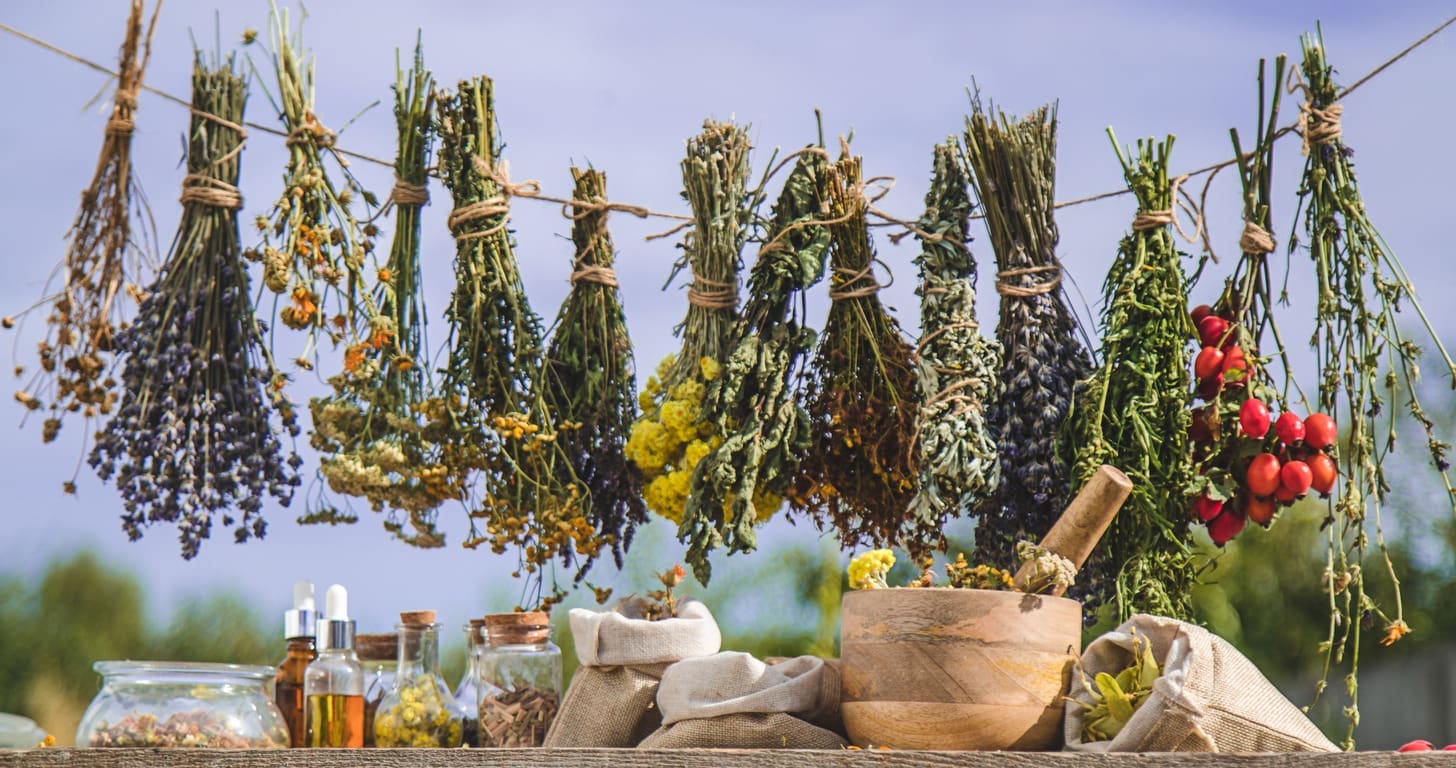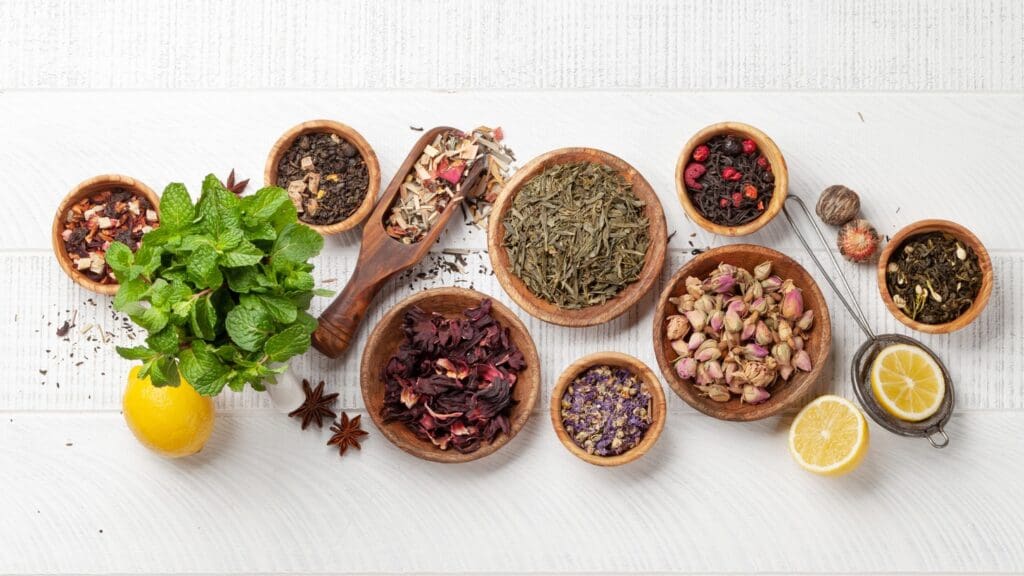Last Updated on November 27, 2025 by Bilal Hasdemir

At Liv Hospital, we believe in a whole-body approach to health. This is very important when dealing with serious issues like cancer. Studies have shown that some natural remedies can help with treatment.
Herbs like turmeric, ginger, and garlic have special powers. They can fight inflammation and protect against damage. We’ll look at how these powerful natural resources can boost your health journey.
Key Takeaways
- Certain herbs and natural remedies have shown promise in supporting cancer treatment.
- Turmeric, ginger, and garlic are among the herbs with anti-inflammatory and antioxidant properties.
- Integrating natural remedies with conventional treatments can enhance patient care.
- Liv Hospital is committed to providing innovative, quality care that includes evidence-based herbal solutions.
- A holistic approach to health can support overall well-being during cancer treatment.
The Science Behind Natural Cancer Remedies
Researchers are looking into natural remedies for cancer treatments. They’ve found that some herbs can target and stop cancer cells from growing. Herbal remedies for cancer have shown promising results in studies.
How Herbs Target Cancer Cells
Herbs have compounds that can affect cancer cells. Some herbs can make cancer cells die naturally. Others stop tumors from getting blood, which they need to grow. Research on cancer stem cells shows herbs can target these cells too. These cells are key in cancer coming back and spreading.
, “The right diet can help prevent and even treat cancer by cutting off the supply lines that feed cancer cells.”
“The right diet can help prevent and even treat cancer by cutting off the supply lines that feed cancer cells.” –
The Importance of Integrating with Conventional Treatments
Natural remedies are promising, but they should be used with conventional treatments. Cancer natural remedies can help with side effects and boost the immune system. They might also make treatments work better.
We stress that herbal treatment for cancer should not replace standard treatments. It should be used alongside them. This way, patients might have a better quality of life and treatment results.
Turmeric: The Golden Healer with Curcumin
Turmeric is a spice known for its health benefits. It’s studied for its role in fighting cancer because of curcumin. We look at how turmeric and curcumin help in cancer treatment, their anti-cancer effects, and how to get more of them into your body.
Curcumin’s Anti-Cancer Mechanisms
Curcumin fights inflammation and is full of antioxidants. These help stop cancer cells from growing. Its anti-cancer actions include:
- Stopping cancer cells from multiplying
- Making cancer cells die
- Stopping new blood vessels from forming, which tumors need to grow
Research shows curcumin affects many cancer-related pathways. This makes curcumin a key player in cancer treatment, as it attacks cancer from different angles.
Effective Ways to Enhance Turmeric Absorption
Even though turmeric and curcumin are promising in cancer care, they’re not easily absorbed. To improve absorption, try these:
- Eat turmeric with a fatty meal or healthy fats like olive oil
- Add black pepper, which boosts curcumin absorption with piperine
- Choose curcumin supplements designed for better absorption
Using these tips can help you get the most out of turmeric and curcumin in fighting cancer.
Ginger: Powerful Anti-Inflammatory Properties
Ginger has been used in traditional medicine for centuries. It’s known for its anti-inflammatory properties. Now, we’re learning more about its benefits in cancer care.
Ginger has compounds like gingerol and shogaol. These have anti-inflammatory and antioxidant effects. They help reduce inflammation, which is important in cancer.
Effect on Cancer Cell Proliferation
Studies show ginger can stop cancer cells from growing. It does this by affecting cell growth and survival pathways. This can slow down tumor growth.
Ginger’s anti-inflammatory effects also help. Chronic inflammation can lead to cancer. Ginger reduces this inflammation, lowering cancer risk.
Therapeutic Applications for Nausea During Treatment
Ginger is great for easing nausea from chemotherapy and radiation. It’s very effective in managing nausea and vomiting during treatment.
You can take ginger in many ways, like fresh, dried, or as a supplement. But, always talk to a healthcare provider before adding ginger or supplements to your treatment plan.
Adding ginger to your care plan can help with nausea and other symptoms. It’s best to discuss its benefits and risks with an integrative oncology practitioner. They can help find the right approach for you.
Garlic: Sulfur Compounds That Combat Cancer
Garlic is being studied for its role in fighting cancer. It’s packed with sulfur compounds like allicin. For centuries, garlic has been used in traditional medicine, and now doctors are taking notice.
Bioactive Components
Garlic has many bioactive parts, with allicin being key. Allicin gives garlic its smell and is made when you crush or chop it. Research shows allicin can stop cancer cells from growing and make them die.
Other compounds in garlic also help fight cancer. They work together to make garlic more effective against cancer.
Optimal Preparation Methods
To get the most from garlic, how you prepare it matters. Crushing or chopping garlic releases allicin. Letting it sit for a few minutes before cooking helps. Heat can destroy allicin, so use garlic raw or add it late in cooking.
Here are tips to keep garlic’s cancer-fighting power:
- Crush or chop garlic and let it sit for 10-15 minutes before cooking.
- Add garlic towards the end of the cooking process.
- Use garlic raw in salads or as a topping.
| Preparation Method | Effect on Allicin | Cancer Fighting Ability |
|---|---|---|
| Raw, Crushed/Chopped | High Allicin Content | High |
| Cooked, Added Early | Low Allicin Content | Low |
| Cooked, Added Late | Moderate Allicin Content | Moderate |
Knowing about garlic’s bioactive parts and how to prepare it can help fight cancer. Adding garlic to your diet is a smart move for cancer prevention or treatment.
Cancer Fighting Herbs: Oregano and Its Essential Oil
Oregano and its essential oil have shown strong cancer-fighting abilities. The key compound carvacrol in oregano oil can kill cancer cells. We will look into carvacrol’s role and how to safely use oregano oil in cancer treatment.
Carvacrol’s Role in Cancer Cell Apoptosis
Carvacrol is a key part of oregano essential oil. Research shows it can kill cancer cells by stopping their growth. In vitro and in vivo studies have shown it can slow down cancer cell growth and cause cell death.
Carvacrol works in many ways to fight cancer. It changes how cells live and die. For example, it can lower proteins that help cells survive and raise proteins that help cells die.
Safe Dosage Guidelines for Oregano Oil
Using oregano oil safely is important. The right amount is a few drops, mixed with a carrier oil, for skin or mouth use. Always talk to a doctor before using oregano oil, if you’re fighting cancer.
- Start with a low dose to assess tolerance.
- Dilute oregano oil in a carrier oil for topical application.
- Consult with a healthcare provider for internal use.
Knowing the good and bad of oregano oil helps cancer patients decide if it’s right for them.
Echinacea: Boosting Immunity During Cancer Treatment
Echinacea is a promising herb for cancer patients to boost their immune system. Treatments like chemotherapy and radiation weaken the immune system. This makes patients more likely to get infections and recover slower. Echinacea, known for its traditional medicine use, may help counteract this weakness.
Keeping the immune system strong is key during cancer treatment. Echinacea’s immune-boosting properties can help patients handle treatment better. This might even improve their treatment outcomes. Let’s look at what makes echinacea good for the immune system.
Polysaccharides and Their Immune-Enhancing Effects
Echinacea’s benefits come from its polysaccharides. These complex carbs boost the immune system, including macrophages and natural killer cells. This activation helps the body fight cancer cells more effectively.
Key polysaccharides in echinacea include arabinogalactans and xyloglucans. They trigger cytokine production. These molecules are vital for a strong immune response against cancer.
Echinacea Preparations for Different Cancer Stages
The type and amount of echinacea depend on the cancer treatment stage. Patients in active treatment often take it as tea, tincture, or capsule. The choice depends on the patient’s needs and preferences.
- For early-stage cancer or preventive care, a daily dose of 1-2 teaspoons of dried echinacea root in tea form may be beneficial.
- During active treatment, patients may opt for more concentrated forms like tinctures or capsules, typically standardized to contain a specific percentage of polysaccharides.
- In advanced cancer stages, echinacea may be used in conjunction with other immunomodulatory herbs as part of a more complete supportive care plan.
Always talk to a healthcare provider before starting echinacea, even more so during cancer treatment. They can help with the right dosage and any possible interactions with other treatments.
Ginseng: Adaptogenic Support for Cancer Patients
Ginseng is great for cancer patients because it helps with the physical and mental stress of treatment. It’s been used for ages to boost energy and health.
Ginseng could really help with cancer-related fatigue. This is a big problem for many people going through cancer treatment.
Different Ginseng Varieties and Their Benefits
There are many kinds of ginseng, each with its own benefits. The two most popular are Asian ginseng (Panax ginseng) and American ginseng (Panax quinquefolius).
- Asian Ginseng: It’s known for making you feel more awake and alert. It can also help with mental focus and lessening tiredness.
- American Ginseng: This type is thought to calm you down. It’s good for boosting your energy and endurance.
Both Asian and American ginseng might help fight cancer and keep your immune system strong while you’re getting treatment.
Managing Cancer-Related Fatigue with Ginseng
Fatigue is a big problem for many cancer patients. Ginseng might help make this better.
| Ginseng Variety | Potential Benefits | Relevant Studies |
|---|---|---|
| Asian Ginseng | Improves mental clarity, reduces fatigue | Studies suggest improved energy levels and cognitive function |
| American Ginseng | Enhances physical endurance, calming effect | Research indicates a possible decrease in fatigue and better overall health |
Before using ginseng with your cancer treatment, talk to your doctor. They can help make sure it’s safe and works well for you.
Rosemary: Antioxidant Protection Against Cancer
Rosemary is being studied for its role in cancer care. It has many antioxidants that help protect against cancer. Carnosic acid and rosmarinic acid are two key compounds.
Carnosic Acid and Rosmarinic Acid Benefits
Carnosic acid and rosmarinic acid are strong antioxidants in rosemary. Carnosic acid helps protect the brain and may reduce oxidative stress, which can lead to cancer. Rosmarinic acid has anti-inflammatory effects and may stop cancer cells from growing.
“The antioxidant properties of rosemary extracts have been recognized for their cancer prevention,” studies say. These compounds work together to boost rosemary’s antioxidant power, making it valuable in cancer care.
Culinary and Therapeutic Applications
Rosemary can add flavor to meals and offer health benefits. Using rosemary in cooking can be a simple way to harness its antioxidant properties. You can also find rosemary extracts in supplement form for a stronger dose.
When using rosemary for health, the preparation matters. Rosemary tea is a calming way to enjoy it. Rosemary essential oil can be used on the skin or in aromatherapy.
Before using rosemary or its extracts for health, talk to a healthcare professional. This is important for cancer patients who are getting treatment.
Cayenne and Capsaicin: Heat That Fights Tumors
Capsaicin, found in cayenne peppers, is being researched for its ability to induce cancer cell death. This compound, responsible for the spicy heat of cayenne, has been studied for its anti-cancer properties. We will examine how capsaicin works and its therapeutic applications, focusing on throat cancer relief.
Inducing Cancer Cell Death
Capsaicin has been shown to induce apoptosis, or programmed cell death, in various types of cancer cells. This process involves the activation of certain proteins that ultimately lead to the death of cancer cells, potentially slowing down tumor growth. Research has indicated that capsaicin can selectively target cancer cells while sparing normal cells, making it a promising area of study in cancer treatment.
The mechanisms behind capsaicin’s anti-cancer effects are complex and multifaceted. It is believed that capsaicin interferes with the signaling pathways that cancer cells use to survive and proliferate. By doing so, capsaicin may help in reducing the progression of cancer.
Throat Cancer Relief Applications
One of the significant areas where capsaicin shows promise is in the relief of throat cancer symptoms. Capsaicin has been used to alleviate pain associated with throat cancer, improving the quality of life for patients undergoing treatment. Its analgesic properties can help manage the discomfort caused by cancerous lesions in the throat.
Further, capsaicin’s ability to induce cancer cell death makes it a valuable compound to study in throat cancer treatment. Ongoing research aims to fully understand its therapeutic potentials and how it can be best utilized in clinical settings.
By exploring the role of cayenne and capsaicin in cancer care, we can uncover new avenues for supporting patients through their treatment journey. As research continues to evolve, the benefits of these natural compounds become increasingly evident.
Green Tea: EGCG and Cancer Prevention
Green tea, with its EGCG, is studied for fighting cancer. We’ll look at how green tea stops cancer growth. We’ll also give tips on how to drink it to help prevent cancer.
Catechins’ Role in Inhibiting Cancer Growth
Catechins in green tea fight cancer. EGCG (Epigallocatechin gallate) is key. It stops cancer cells from growing and makes them die.
- Antioxidant activity: Catechins protect cells from damage by free radicals, which can lead to cancer.
- Inhibition of cancer cell proliferation: EGCG slows down the growth of many cancer cells.
- Induction of apoptosis: Catechins can make cancer cells die, stopping tumors from growing.
Daily Consumption Guidelines for Preventive Care
Drink 2-3 cups of green tea daily for cancer prevention. It’s important to brew it right to get the most catechins.
- Choose high-quality green tea leaves or bags.
- Brew in hot water, not boiling, for 1-3 minutes.
- Drink it often, with meals, to help your body absorb it better.
Green tea is usually safe, but too much EGCG can cause problems. Always talk to a doctor before taking supplements.
Three Powerful But Lesser-Known Cancer-Fighting Herbs
Our research has found three herbs that are not as well-known but have great power. Milk thistle, astragalus, and cat’s claw help cancer patients in special ways. They have unique properties that support those fighting cancer.
Liver Protection During Treatment
Milk thistle is famous for protecting the liver. It’s very helpful during cancer treatment. The part called silymarin in milk thistle helps keep the liver healthy. It might also lessen the liver damage from chemotherapy.
We advise talking to your doctor about using milk thistle. It could help lower liver damage from some cancer treatments.
Immune Enhancement
Astragalus boosts the immune system, as it has been used in traditional medicine. Its polysaccharides help the body fight off sickness better. This is great for cancer patients who are fighting off treatments that weaken their immune.
Astragalus might make it easier for patients to handle treatment side effects. It could also improve their life quality.
Reducing Treatment Side Effects
Cat’s claw is known for its anti-inflammatory effects. It can help lessen side effects from cancer treatment. It’s been used to help the immune system and ease symptoms like fatigue and pain.
We recommend talking to your doctor about using cat’s claw. It might help manage side effects from treatment.
Creating an Effective Herbal Protocol for Cancer Support
Creating a personalized herbal protocol is key in supporting cancer treatment. Many herbs have shown promise in helping with cancer care. Let’s look at how to make an effective herbal protocol that supports cancer treatment.
Synergistic Herb Combinations
Using synergistic herb combinations is a key principle. Combining herbs can make their effects stronger. For example, turmeric and ginger together may fight inflammation better. Echinacea and astragalus together can boost the immune system.
Studies in integrative oncology show that some herb combinations can work better together. A study found that curcumin from turmeric and green tea extract together fight cancer cells more effectively.
Customizing Remedies Based on Cancer Type
It’s important to customize herbal remedies for each cancer type. Different cancers respond to different herbs. For example, green tea may prevent some cancers, and milk thistle is good for the liver during treatments.
Integrative oncology practitioners tailor herbal protocols for each patient. They consider the cancer type, stage, and individual factors. This approach helps maximize the benefits of herbal support.
Working with Integrative Oncology Practitioners
Working with integrative oncology practitioners is recommended. They are trained to use herbal medicine safely with conventional treatments. This ensures herbal remedies are used effectively.
Patients can expect a detailed assessment with an integrative oncology practitioner. They will consider the cancer type, treatment plan, and overall health. This leads to a tailored herbal protocol that supports well-being.
Combining oncology expertise with herbal medicine knowledge offers a complete approach to cancer care. This ensures herbal remedies are used safely and effectively. It maximizes their benefits while minimizing risks.
Conclusion: Balancing Natural Remedies with Conventional Cancer Care
A balanced approach to cancer care can greatly improve patient outcomes. By mixing natural remedies with traditional treatments, patients get a holistic care plan. This plan focuses on their overall health and well-being.
We’ve looked at herbs like turmeric, ginger, and green tea that help cancer patients. These natural remedies can work alongside traditional treatments for better care. Research shows this mix can lead to better health and a higher quality of life for patients.
It’s key to work with doctors when using natural remedies with traditional cancer care. This way, patients can enjoy the benefits of natural treatments while getting top-notch conventional care. This approach lets patients actively participate in their recovery, combining the best of both worlds.
FAQ
What are the most effective cancer-fighting herbs?
Turmeric, ginger, garlic, oregano, echinacea, ginseng, rosemary, and cayenne are top herbs. They have anti-cancer properties. Using them with traditional treatments can help.
How do natural cancer remedies work?
Natural remedies target cancer cells and boost the body’s defenses. Herbs like turmeric and ginger fight inflammation. This can slow cancer cell growth.
Can I use natural remedies instead of conventional cancer treatments?
No, natural remedies should not replace traditional treatments. They are best used to support patients during treatment.
How can I enhance turmeric absorption?
Eat turmeric with a fatty meal or with black pepper. Black pepper has piperine, which boosts turmeric’s effects.
What are the benefits of using oregano oil for cancer care?
Oregano oil has carvacrol, which kills cancer cells. But, use it safely to avoid harm.
Can echinacea boost immunity during cancer treatment?
Yes, echinacea strengthens the immune system. This is good for cancer patients during treatment.
How can ginseng support cancer patients?
Ginseng helps manage fatigue and supports overall health. It’s great for cancer patients.
What are the benefits of green tea in cancer prevention?
Green tea has catechins that stop cancer growth. Drinking it often may lower cancer risk.
How can I create an effective herbal protocol for cancer support?
Mix herbs that work well together. Tailor remedies for your cancer type. Work with integrative oncology experts.
Are there any lesser-known cancer-fighting herbs?
Yes, milk thistle, astragalus, and cat’s claw are lesser-known. They support cancer patients by protecting the liver, boosting immunity, and easing side effects.
Can natural remedies be used in conjunction with conventional cancer treatments?
Yes, natural remedies can support patients alongside traditional treatments. They may even improve treatment results.
References
- National Center for Biotechnology Information (NCBI). Plants against cancer: a review on natural phytochemicals in preventing and treating cancers and their druggability. https://www.ncbi.nlm.nih.gov/pmc/articles/PMC4017674/
- National Foundation for Cancer Research (NFCR). Cancer‑Fighting Food: Can Herbs and Spices Treat Cancer? https://www.nfcr.org/blog/can-herbs-and-spices-treat-cancer/
- Ohio State University (OSU). Cancer and Food: Five Herbs That Could Reduce Risk. https://cancer.osu.edu/blog/five-herbs-that-could-reduce-risk
- National Center for Biotechnology Information (NCBI). Complementary and Alternative Medicine in Cancer Control. https://www.ncbi.nlm.nih.gov/books/NBK92774/








